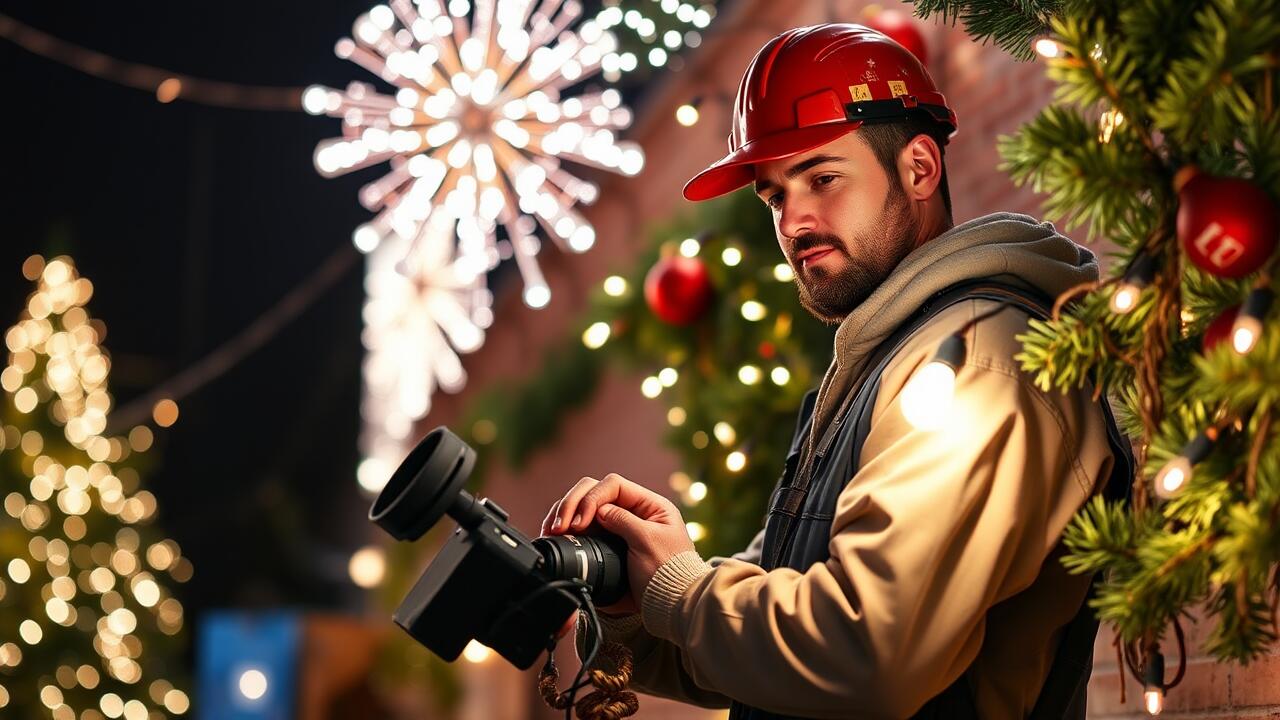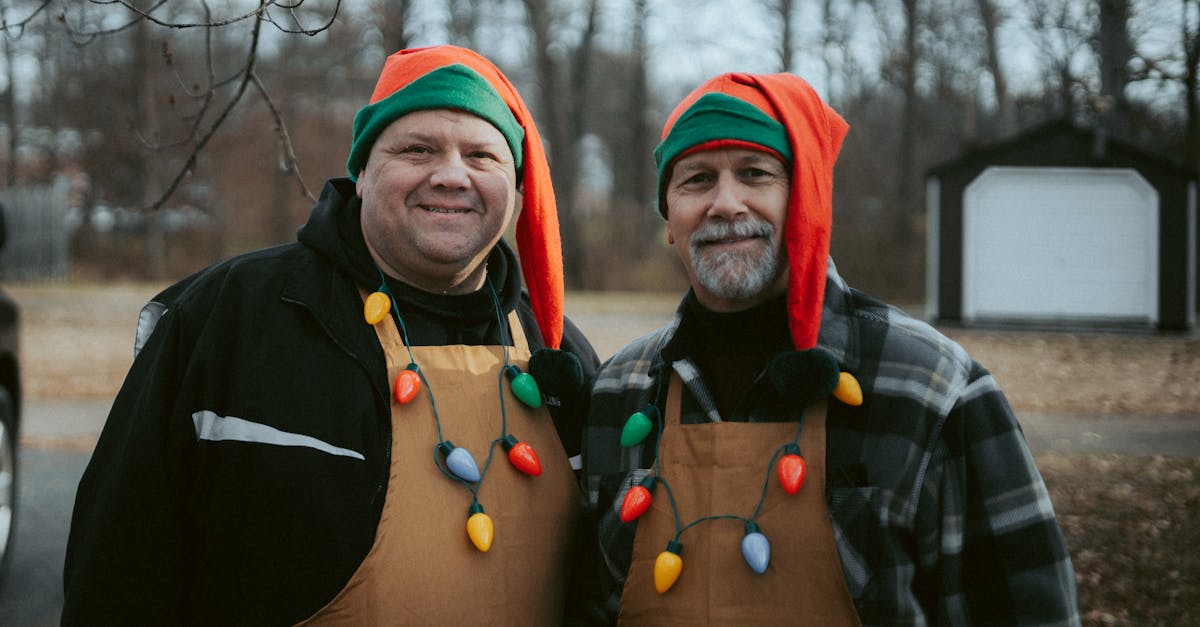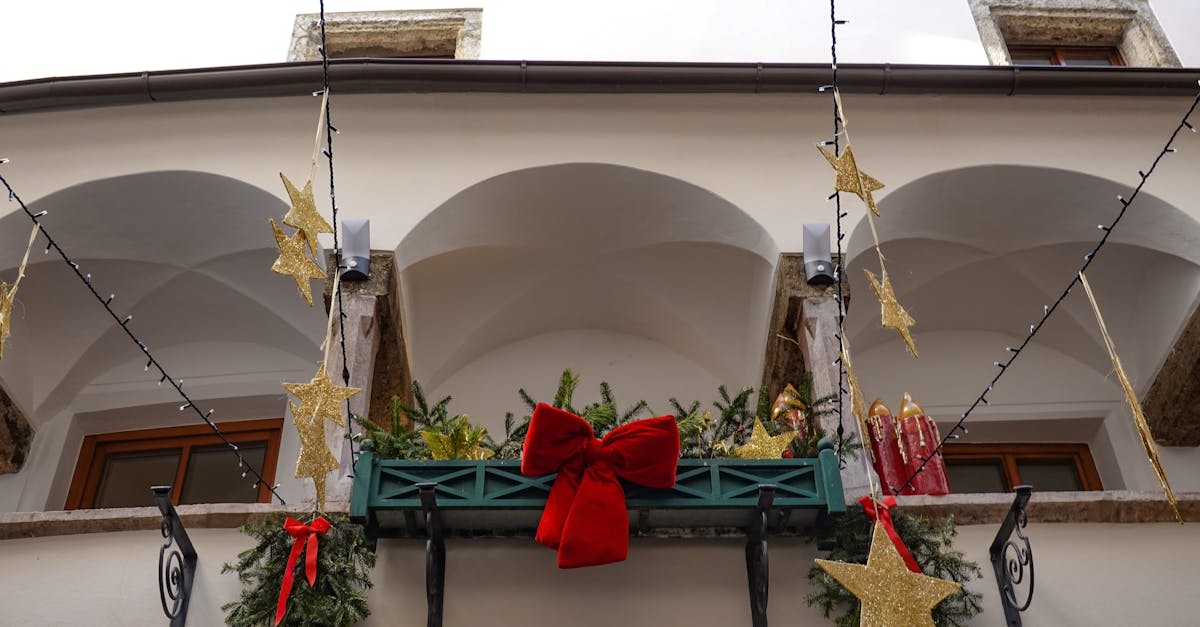
Table Of Contents
Estimating the Number of Outlets
Estimating the number of outlets for your Christmas light installation requires careful planning. Start by assessing the areas where you intend to hang the lights. Consider the distance between the outlets and the intended display zones. Outlets should be placed within reach of each lighting strand to avoid using extension cords, which can pose safety risks.
Next, account for the total wattage of the lights you plan to use. Each outlet has a maximum wattage limit, typically 15 or 20 amps. It's important to ensure that your total wattage doesn’t exceed the capacity of a single outlet. If you have multiple strands, it may be necessary to distribute them across several outlets to prevent overloading any one circuit, ensuring a safe and effective Christmas light installation.
Safety Considerations for Electrical Connections
When planning for Christmas light installation, ensuring safety should be a priority. Check all electrical connections for any signs of wear or damage before hanging lights. Use only outdoor-rated extension cords and power strips specifically designed to handle the electrical load of the lights you plan to use. Overloading circuits can lead to potential hazards, including overheating and fire risks. Additionally, make sure to connect everything in dry conditions to minimize the risk of electric shock.
During Christmas light installation, verify that the outlets are grounded and that GFCI (Ground Fault Circuit Interrupter) protection is in place. This safety feature will help prevent electrical shock by cutting off the circuit if it detects any imbalance. Avoid using multiple extension cords, which can increase the risk of overload; instead, strive for a direct connection wherever possible. Familiarize yourself with the wattage of your lights and ensure you stay within the limits of your electrical system.
Planning for Different Display Styles
When planning your Christmas light installation, consider the different display styles that can enhance your home's festive appearance. Whether you prefer a classic look with white fairy lights or a vibrant display featuring multicolored strands, each style requires careful planning regarding the types and quantities of lights needed. For instance, outlining the roofline may involve longer strands, while wrapping trees can require shorter, more flexible options. Take the time to visualize how each style fits within your overall design theme and the architectural features of your home.
Moreover, popular themes like the traditional red and green or a winter wonderland aesthetic can dictate additional lighting requirements. Each theme may call for different types of lights, such as LED bulbs for their energy efficiency or icicle lights for a touch of whimsy. Knowing the visual impact you want to achieve will help in estimating the total footage needed for your Christmas light installation. Exploring these variations will ensure that your holiday decorations leave a lasting impression.
Popular Themes and Their Lighting Requirements
When planning your Christmas light installation, consider popular themes that can shape your choice of lights and overall design. A classic winter wonderland theme often features white or blue lights, creating a serene and frosty atmosphere. This style typically requires icicle lights or net lights for shrubs, which provide a uniform appearance. Incorporating additional elements like frosty garlands and snowman figures can enhance this theme, ensuring consistency throughout the display.
A more festive approach might involve a traditional red and green theme, commonly associated with holiday cheer. Using multi-colored string lights, wreaths adorned with bright bulbs, and accented garlands can evoke a sense of nostalgia. This display style may require additional power outlets to accommodate the higher voltage from multiple strings. Each theme has its own lighting requirements and can significantly impact the overall look of your Christmas light installation.
Preparing for Installation
Before diving into Christmas Light Installation, gather all necessary tools and materials to ensure a smooth process. Essential items include measuring tape to gauge your display area, a sturdy ladder for reaching higher spots, and outdoor-rated extension cords. Having clips or fasteners on hand for securing lights will also streamline your setup. Make a checklist to help keep everything organized and avoid last-minute trips to the store.
Proper preparation can also make a significant difference in the efficiency of your installation. Familiarize yourself with the layout of your property, noting where lights will hang. Assess the electrical capacity of your outlets and plan cable runs to minimize tripping hazards. Taking the time to plan out your installation saves effort and enhances the overall safety and durability of your holiday display.
Tools and Materials You'll Need
For a successful Christmas light installation, it's essential to gather the right tools and materials beforehand. Start with a reliable set of ladder or scaffolding to safely reach higher areas. A good quality extension cord is necessary for connecting lights, along with outdoor-rated lights that can withstand winter weather conditions. Additionally, consider using clips or hooks designed for easy and secure attachment of lights to various surfaces.
Also, prepare a toolbox with items like wire cutters, zip ties, electrical tape, and a power strip. These tools will help ensure your installation is not only safe but also aesthetically pleasing. If your design includes multiple strands or different types of lights, having a measuring tape can assist in planning their layout. By organizing all necessary materials in advance, you can streamline the Christmas light installation process.
FAQS
How do I determine how many outlets I need for my Christmas lights?
To estimate the number of outlets needed, consider the total wattage of the lights you plan to use and divide it by the wattage limit of each outlet. Ensure there are enough outlets to accommodate your desired display without overloading any single circuit.
What safety precautions should I take when hanging Christmas lights?
Always use outdoor-rated lights for exterior displays, check for frayed wires or damaged bulbs, and avoid overloading circuits. Use ground fault circuit interrupters (GFCIs) and ensure your ladder is stable when reaching high areas.
How can I decide on a theme for my Christmas light display?
Start by considering personal preferences or neighborhood aesthetics. Popular themes include traditional, winter wonderland, or whimsical designs. Research various styles and choose one that resonates with you and complements your home.
What types of lights are best for different display styles?
Traditional themes often use incandescent bulbs, while modern displays may incorporate LED lights for efficiency. Specialty shapes or colors can enhance whimsical or themed displays, so choose lights based on the desired effect and theme.
What tools and materials do I need for hanging Christmas lights?
Essential tools include a sturdy ladder, extension cords, clips or hooks for securing lights, and possibly a timer for automated control. Additionally, ensure you have enough light strands and safety gear, such as gloves for handling bulbs.



